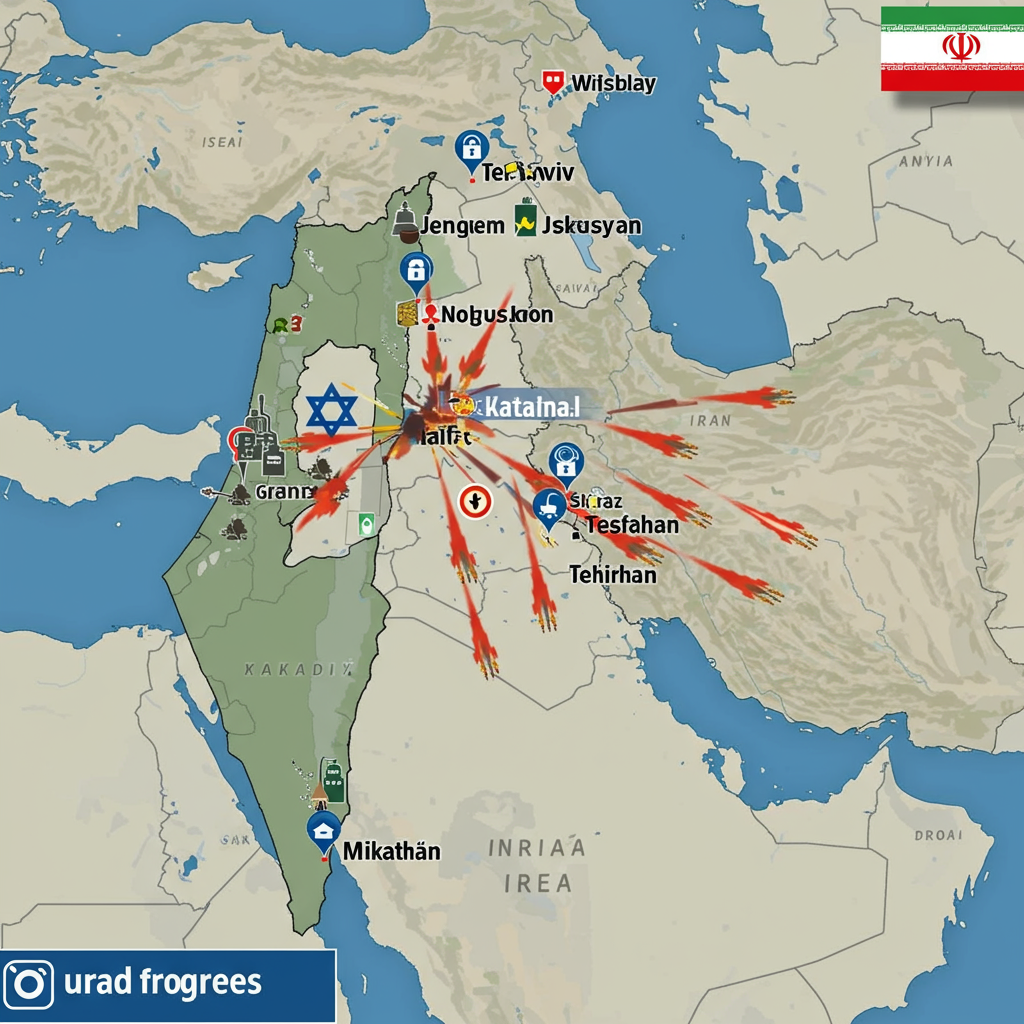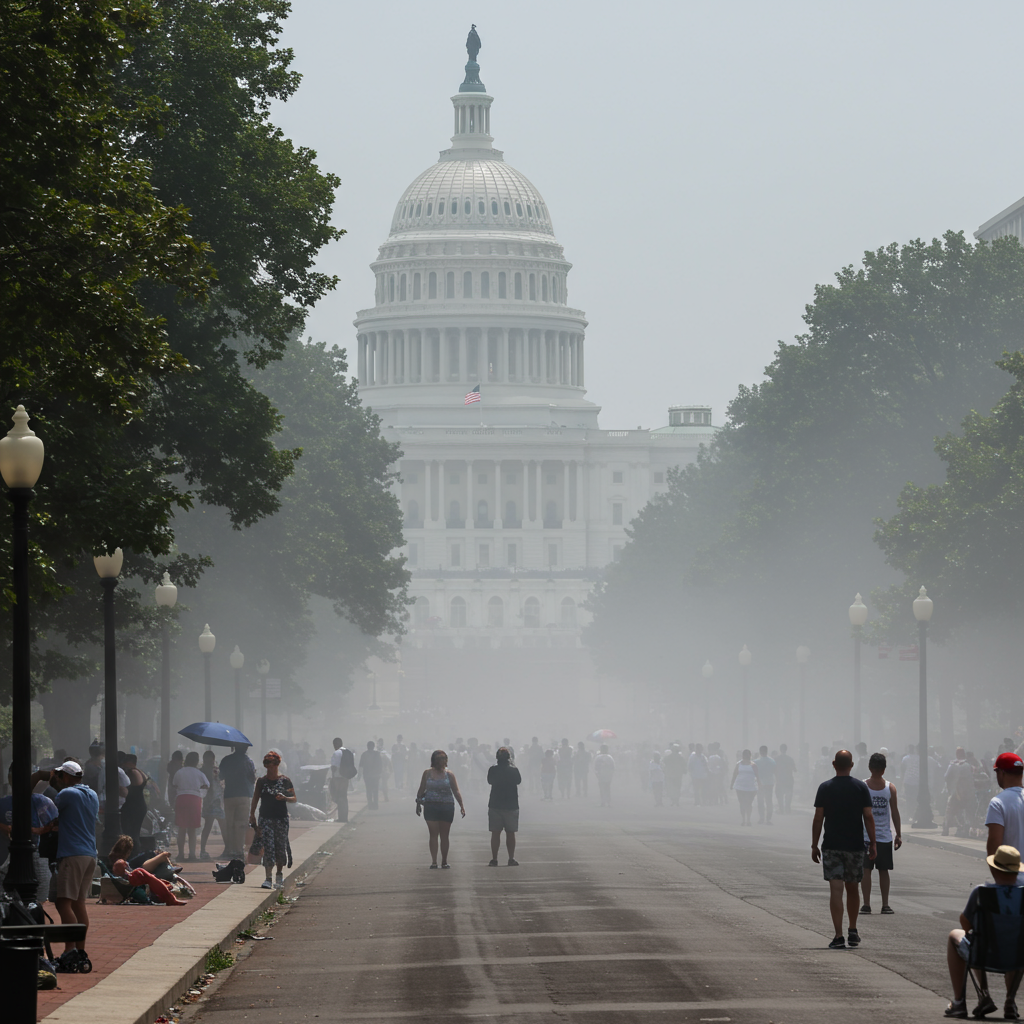The intense confrontation between Israel and Iran entered its sixth consecutive day this week, marking the most significant and widespread faceoff in the history of their long-simmering conflict. Beginning last Friday with Israeli airstrikes targeting Iran’s nuclear program and military leadership, the hostilities have rapidly escalated, prompting concerns about potential U.S. involvement and causing destruction across both nations.
Understanding the scope of this conflict requires looking at the strategic locations and infrastructure being hit by each side. While independent verification is challenging amidst wartime reporting restrictions and conflicting claims, a clearer picture emerges from open-source intelligence, media reports, and official statements.
Israeli Strikes Target Iran’s Strategic Assets
Israel’s air campaign has focused heavily on degrading Iran’s nuclear and ballistic missile capabilities, alongside military and energy infrastructure.
Key targets in Iran have included:
Nuclear Facilities: Strikes hit crucial sites like the Natanz Fuel Enrichment Plant, Iran’s primary enrichment complex. Reports indicate severe damage to the electrical infrastructure there, potentially destroying or heavily damaging hundreds, if not thousands, of centrifuges. The smaller above-ground pilot plant at Natanz, used for higher enrichment levels, was also reportedly destroyed. Damage was also reported at the Isfahan complex, impacting buildings involved in uranium conversion and metal work – a process considered vital for potential weapons development. The deeply buried Fordow Fuel Enrichment Plant, situated inside a mountain, reportedly sustained little or no visible damage. This facility is particularly difficult to target due to its depth (estimated 80-90 meters underground) and strategically important as a fallback site capable of producing uranium enriched up to 60%. Experts suggest effectively destroying Fordow might require specialized U.S. “bunker buster” bombs and aircraft like the B2 bomber, which Israel reportedly lacks.
Military Installations: Israel claims to have targeted a significant portion of Iran’s missile launchers – potentially destroying around a third of their stockpile – and struck military bases, airfields (including at Mashhad and Tabriz, where satellite images show damage), and even claimed to have hit F-14 fighter jets at Tehran airport. Strikes also reportedly targeted command centers and facilities belonging to elite Iranian military units. Israel asserted “total air superiority” over Tehran’s skies.
Energy Infrastructure: Critical energy sites have been hit, including gas processing facilities at South Pars (the world’s largest gas field), and major fuel storage depots near Tehran. Footage has reportedly shown large fireballs at these locations.
Government and Media: Buildings belonging to Iran’s Foreign Affairs Ministry and Ministry of Intelligence and Security in Tehran were targeted. A strike on the state broadcaster’s building reportedly killed employees.
Iran’s Health Ministry reported over 200 people killed and hundreds injured from the Israeli strikes as of Sunday, with human rights groups suggesting the numbers could be higher. Assessing the full extent of damage across these dispersed sites remains difficult.
Iranian Retaliation Hits Across Israel
In response, Iran has launched waves of retaliatory missile and drone attacks targeting cities and infrastructure across Israel. Sirens have sounded daily for the past six days as Iranian projectiles penetrate Israeli airspace.
Impact points in Israel have included:
Tel Aviv Metropolitan Area: Several key sites were hit. Missiles landed dangerously close to the Israeli Ministry of Defence headquarters (the Kirya) in Tel Aviv. The Weizmann Institute of Science in Rehovot, a research center with reported military ties, was also struck. Residential and commercial areas in neighboring cities suffered heavy damage; nine buildings were reportedly destroyed in Ramat Gan, and areas in Petah Tikva saw significant impact, including a religious school destroyed in Bnei Brak. The city of Bat Yam, south of Tel Aviv, experienced particularly severe destruction and casualties, with emergency services reporting nine deaths and around 200 injured. Homes were also destroyed in Rishon LeZion.
Northern Israel: Iranian missiles struck Haifa’s Bazan petrochemical complex, forcing operations to shut down. Residential buildings in Haifa were also hit. In Tamra, a predominantly Palestinian town, a missile strike killed four women from the same family, highlighting concerns about inadequate bomb shelter access in some areas.
- Other targets included an reported strike causing a fire in central Israel and, according to Iran, targeting the Meron airbase in the north.
- www.aljazeera.com
- www.reuters.com
- www.usatoday.com
- www.theguardian.com
- www.smh.com.au
Israel has reported 24 people killed and hundreds injured by the Iranian attacks, primarily civilians. While Israel possesses a multi-layered defense system (Iron Dome for short-range, David’s Sling for medium, Arrow for long-range) with an estimated 80-90% success rate against incoming projectiles, some Iranian missiles are penetrating the defense shield, causing more severe damage than previously seen from other regional actors. Iran’s Revolutionary Guards have even claimed using new methods to bypass defenses, though details are unverified.
Escalation and the Specter of U.S. Involvement
The sheer intensity and geographic spread of the strikes underscore the dangerous escalation of this conflict. With Iran possessing the Middle East’s largest ballistic missile arsenal and continuing its controversial uranium enrichment activities (now reaching 60% purity), the stakes are incredibly high.
Adding to the tension is the possibility of the United States being drawn directly into the fighting. President Donald Trump is reportedly considering possible U.S. involvement, cutting short a G7 summit to meet with his National Security Council. The U.S. has increased its military posture in the region, deploying additional assets and repositioning forces, though officials have described these moves as defensive and observational rather than direct participation in Israel’s campaign.
However, Iran has reportedly threatened to target the extensive network of U.S. military bases across the Middle East should the U.S. intervene directly. These bases house thousands of U.S. personnel in countries including Israel, Syria, Bahrain, Iraq, Jordan, Kuwait, Qatar, Saudi Arabia, and the UAE, many of which have faced attacks from Iran-backed groups since late 2023.
As the exchange of strikes continues daily, the conflict remains highly volatile, with potential for further escalation and a growing human toll on both sides.




